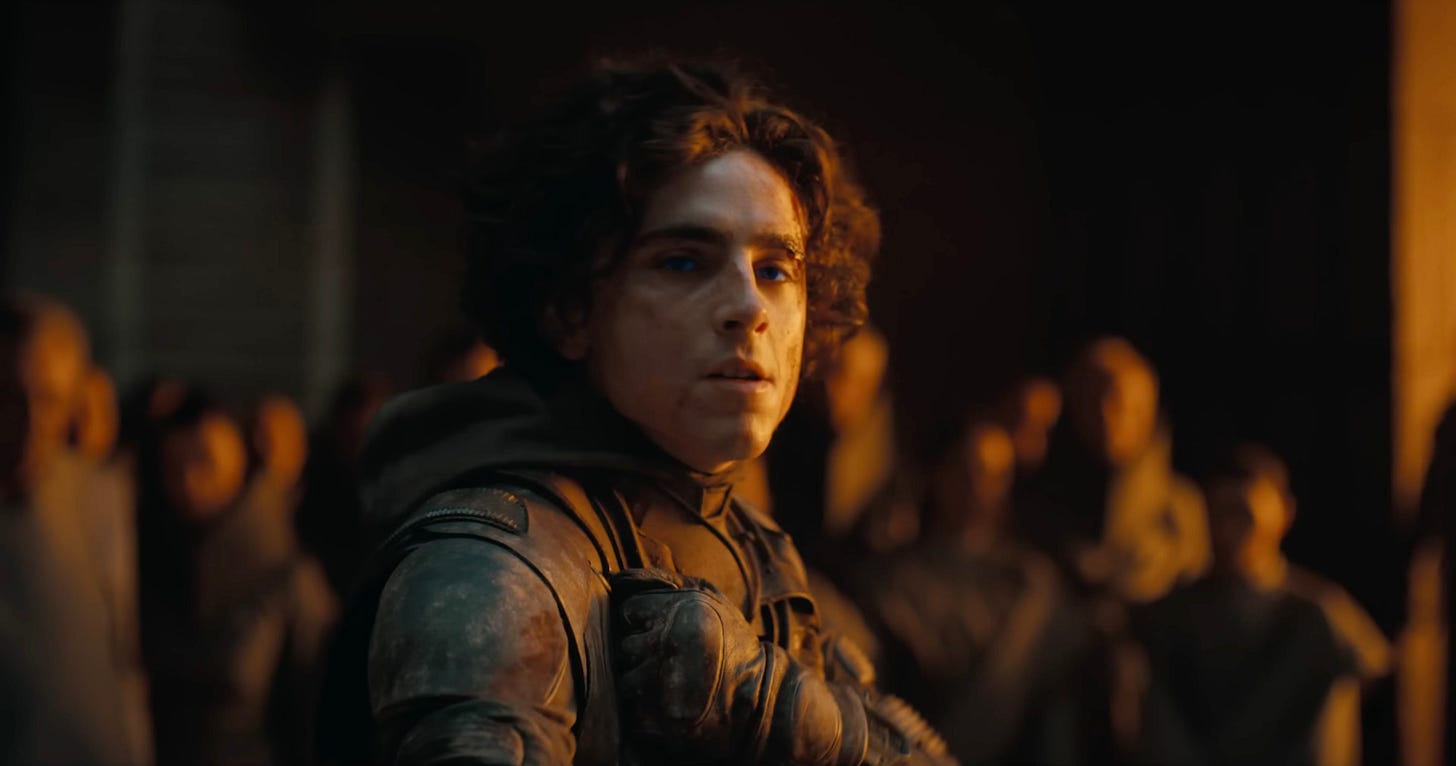In The Abolition of Man, C.S. Lewis (pulling from Plato) posits that the human soul has three parts: the head (the rational part), the chest (the spirited part), and the belly (the appetitive part). The head knows, the chest loves, and the belly wants. To truly flourish as a human, one must properly order these three parts: the head and the chest should harmonize with each other and rule over the belly together. That is, you should love what you know it is right to love, and you should govern your wants instead of being governed by them.
You can read these three categories into just about anything if you have a mind to – especially works of popular fiction with trios of main characters. Take Star Trek as an example: Mr. Spock is the head, Captain Kirk is the chest, and Dr. McCoy is the belly. Or take Harry Potter: Hermione is the head, Harry is the chest, and Ron is the belly. Where there’s a will, there’s a tripartite soul.
I’ve made quite a lot of hay out of the tripartite soul in Star Wars, so perhaps it’s not surprising that I’ve come up with some crackpot notions about the tripartite soul in Dune: Part Two. The Emperor’s speech about “the heart,” which I wrote about last week, was what first got me thinking along these lines. Then I realized that each of the four factions in the film is represented by a trio of main characters, and I started thinking…
There are three main Atreides in the film: Jessica, Paul, and Gurney. The scheming, plotting, calculating Jessica is the head. Paul is the chest, driven by love (for Chani, for his deceased father, for his unborn sister) and honor. Gurney is the belly, hungering for revenge against the Harkonnens (“I wanted blood”) and the power to make that revenge possible. He is (re)introduced singing a very earthy, bodily song about piss; Jessica, meanwhile, becomes a religious leader who controls the minds and beliefs of the Fremen.
There are three main Fremen characters: Stilgar, Chani, and Shishakli (Chani’s friend). Stilgar is the head, so fixated on the idea of Paul as the Lisan al-Gaib that he is willing to sacrifice his bodily life. Chani is the chest, motivated by fiercely loyal love (for her people, first, and then for Paul). Shishakli is the belly: wryly pragmatic, irreverent, and skeptical. Like Gurney, she has a body-centric sense of humor, referring to the sacred “Water of Life” as “worm piss.”
The three primary Harkonnen characters are the Baron, Feyd-Rautha, and Rabban. Although he is obviously ruled by his belly in some very palpable ways, the Baron is the head – a calculating schemer, like his daughter Jessica. Feyd-Rautha is, perhaps surprisingly, the chest. He is “strongly motivated by honor” and twisted sexual passion (lust, the most relational sin and the one that most resembles love). Tellingly, he passes the Bene Gesserit Gom Jabbar test, proving that he is a “human” who is able to control his impulses. The same is not true of “Beast” Rabban, who is obviously the belly – a big, dumb brute completely dominated by fear and rage.
If we take the Bene Gesserit as the fourth faction, the trio consists of the Reverend Mother, Princess Irulan, and Lady Margot Fenring. The Reverend Mother is the head, a coldly dispassionate planner. Princess Irulan is the chest, conscientious (she is disturbed to learn that her superior tried to exterminate the entire Atreides bloodline) and loving (she is willing to give herself to Paul in exchange for her father’s life). The sensual, seductive Lady Margot – a marked contrast to the ascetic austerity of the other Bene Gesserit – is the belly. (She even ends up carrying the appetite-driven Harkonnen bloodline in her own belly!)
Where does this leave the Emperor, though? Strange as it sounds at first, I think we can form a “royalty” trio with the Emperor as the belly, under the Reverend Mother (the head) and Irulan (the chest). When the three are deliberating over how to handle the situation on Arrakis, the Emperor can only come up with ideas involving simple, blunt force (sending armies, sending assassins). It is the Reverend Mother and Irulan who actually think through the situation. The Emperor is a petty, jealous man, “guided by the calculus of power,” which is to say that he is really ruled by the Reverend Mother, who tells him how to get power and thus exercises power over him. The most powerful man in the universe turns out to be a curiously powerless figure.
One thing I like about this reading is how neatly it fits with the way the final minutes of the film foreground all four “chest” characters. Feyd-Rautha dies with an honorable sentiment on his lips (“You fought well, Atreides”). Out of love for her father, Irulan gives her hand in marriage to a man who does not love her. Paul, meanwhile, turns away from both his father’s sense of honor and his love for Chani – who turns away, in turn, because her conscience will not allow her to follow the man she loves any further down his dark path. Honor, love and conscience are all crushed. It is, in multiple senses of the word, a heartbreaking ending.
Recommended reading: Robert Brown has been doing some good thinking lately about the way Lewis’ image of the chest adjusts Plato’s theory of the tripartite soul.


